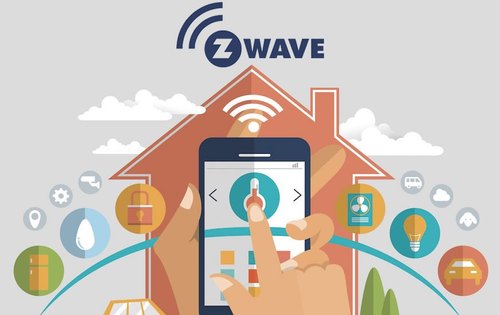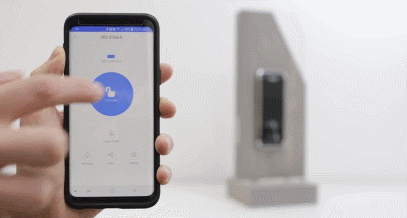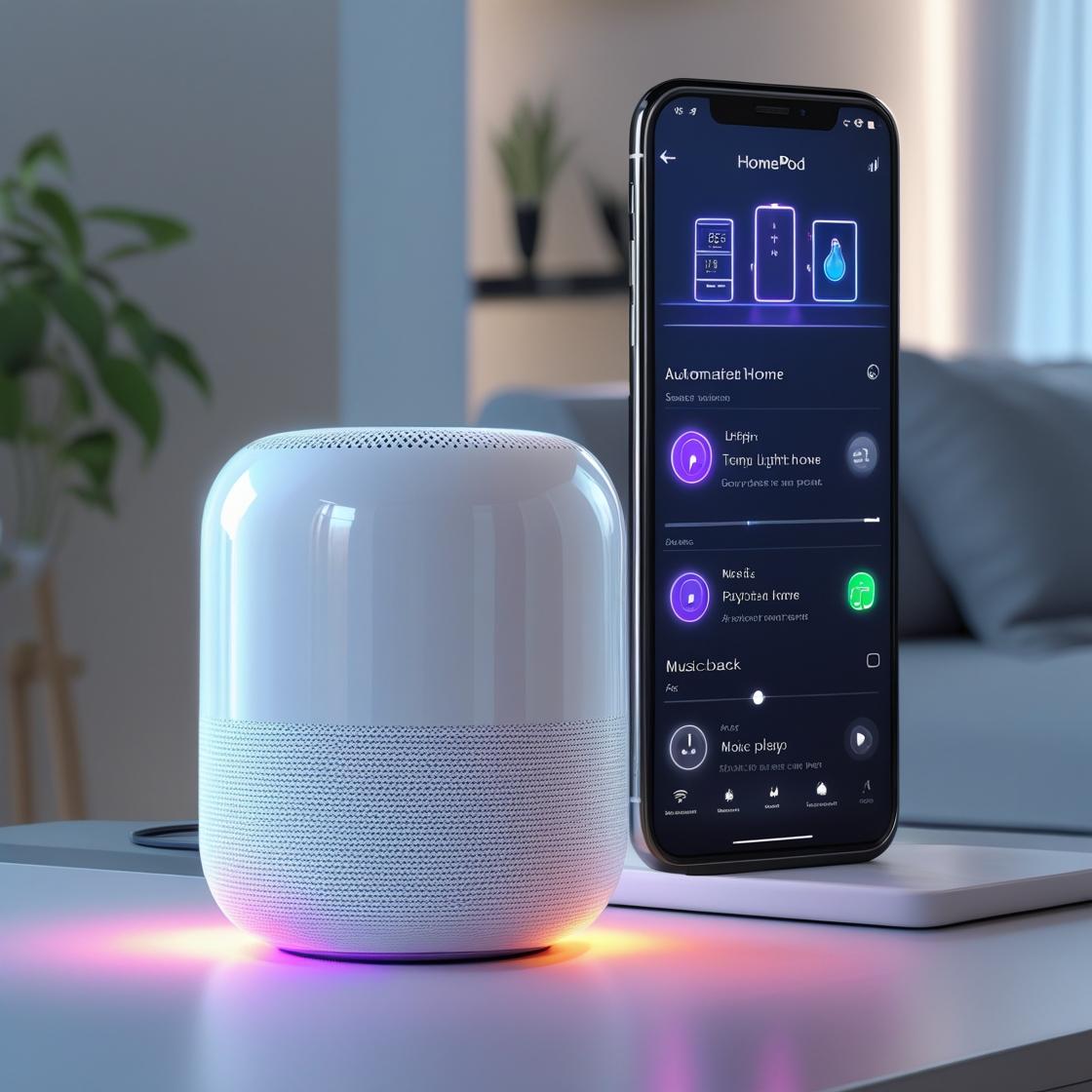
Today, home automation is important more than ever before. It changes and improves everyday life not only in luxury homes, but to ordinary people as well. In the myriad of different smart home products, the majority of end-users probably noticed Z-Wave mark or logo on some electronic equipment. For the curious tenants of smart homes and all other ones wandering themselves about what is Z Wave technology and its applicability, some of the basics are described in this article.
Some History
It is interesting to know that one of the first wireless protocols specifically dedicated to home automation was X10, released in 1975. It enabled wireless communication at 120 kHz via digital burst radio transmissions between home electronic devices, such as programmable switches and outlets. Since it was one of the pioneer projects in wireless communications, X10 had significant limitations compared to modern solutions. In the beginning, it was a one-direction – simplex radio communication due to limitations of some home devices that were not capable of responding after the received command. Lately, this protocol evolved and provided duplex radio communication, but it was an expensive solution. Some other problems were connected to this wireless protocol, caused by circuits, wired on different polarities that affected communication reliability and signal loss.
Popular Protocols
The increasing number of available smart home solutions at a reasonable price is the dominant catalyst of home automation’s further development and widespread deployment. At the same time, customers are becoming more technically demanding and evolve together with technology and the market. Nowadays, the accessibility of different wireless standards and protocols (like Bluetooth, ZigBee, Z-Wave, Wi-Fi, RFID, or NFC) under the influence of IoT technology evolved home automation to the new, higher levels.
In this process, the role of wireless communications is crucial for providing connectivity as the most important condition in automation establishment. By their nature, wireless communications technologies are mutually different and incompatible, they work on different frequencies, have different ranges and resistance to obstacles, or support different security mechanisms, etc. Some of them are better solutions, compared to others in specific use-cases. let’s discuss the most important performances of Z-Wave technology in the smart home context.
It has much lower power supply consumption compared to some other important wireless technologies, like Wi-Fi, but a higher range compared to well-known wireless standards, such as Bluetooth.
The continuously evolving technology model affected Z-Wave that was recently upgraded to Z-Wave Plus standard (firstly known as Z-Wave 500). Z-Wave plus was enhanced with increased range (up to 150 m); battery saving features that extended the average battery life for more than 50%; Over–The–Air functionality that supports remote, over the air upgrades; extension of frequency band and available RF channels for more than 250%; improved reliability by self-healing and fault tolerance features with network discovery mechanisms, etc.
Z-Wave Today
Nowadays, the majority of the new devices are embedded with the latest Z-Wave Plus v2 standard, also known as 700 Series, or Gen7 that enable improved S2 security framework and SmartStart – a true plug and play support capable to make the smart device from any electronic appliance in the house. The latest Z-Wave 700 standard was introduced in 2019 but is not widely deployed yet. It provides more energy saving features – up to 10 years of battery life, superior memory, and processing power, line of sight range extension to 200m, etc.
Z-wave performances
The typical Z-Wave operating frequency range is 800-900MHz. Oppositely to many wireless technologies working in overcrowded 2.4GHz frequency band such as Wi-Fi or ZigBee, Z-Wave is not sensitive to interference. The precise Z-Wave working frequency is correlated with the radio frequency allocation plans in different countries. It can be 908.40 MHz, 908.42 MHz and 916 MHz in the US, or 868.40 MHz, 868.42 MHz and 869.85 MHz in UK and Europe. Because of this, if someone from the US visits Europe and buys a Z-Wave device, it might not work in a US smart home.
The Z-wave wireless standard supports mesh topology, meaning it enables connectivity between devices that are in mutual range, and are extending the network coverage without the central hub that is for example, necessary in Wi-Fi networks – a wireless access point or wireless router. It is important to notice that a central smart home hub’s role in Z-Wave networks is to manage and administer all smart home devices. However, it does not provide an Internet connection like explained in Wi-Fi networks. There are 2 types of devices in Z-Wave networks – Controllers/Masters and Slaves. Masters are generally Z-Wave central hubs and the slaves are typically different sensors or other types of information generators.
The mesh network enables the signals to hop from device to device. In some cases, Z-Wave repeaters, such as different smart plugs, are used to extend the wireless network coverage and send a signal from a distant Z-Wave node to the central smart home hub. Moreover, direct communication is enabled between the nodes that are not in direct range, since the data can hop from device to device. A maximum of 4 hops is enabled between the nodes in the Z-Wave network. This is a necessary trade-off that has to take into account the network size, its stability, and the maximum time a message is allowed to be transferred within the network. Additional nodes in the network are strengthening its mesh structure and improve the network coverage, too.
Extending the network with new devices is a process known as inclusion. Z-WAVE devices detect automatically the optimal routes for commands and messages, while passwords or SSIDs entering is not necessary like within Wi-Fi networks. Every Z-Wave network has its 32-bit identification (ID), also known as a Home ID. All devices within a Z-Wave network have their 8-bit Node ID. This ensures the separation between the neighboring Z-Wave networks within the smart homes and their fully independent functionality.
Theoretically, the Z-Wave mesh network supports 232 nodes – devices that are embedded with long-lasting batteries and have up to 100m range. The technology provides typical data throughput of 40kbps in 915 MHz, and 20kbps in 868 MHz operating frequency. Undeniably, it is not optimized for full HD video streaming and online gaming, but it is optimized for wireless control and sensor applications.
Z-Wave Long Range networks announced in September of 2020 are designed to increase the mesh structure to 2000 nodes, extend the network range 4 times, and support backward compatibility with standard Z-Wave networks.
Regarding security, this wireless technology is embedded with AES-128 encryption solution, similar to other wireless standards (for example, ZigBee). It provides packet encryption, integrity protection, and device authentication services. It has an in-band network key exchange and AES symmetric block cipher algorithm using 128-bit key length. End-to-end security is enabled on the application level.
Z-Wave Applicability within Smart Homes

Z-Wave Alliance established in 2005 is responsible for the management and administration of Z-Wave technology, its evolution, and the provisioning of complete backward interoperability between all Z-Wave products. It gathers more than 700 members and has been certified more than 3000 types of products that had to fulfill requests from demanding standards. Estimation is that there are more than 100 million Z-wave products worldwide, covering 70% of the smart home market.
Home automation setup based on Z-Wave technology is user-friendly and does not imply any prior technical knowledge of the end-users. Thanks to the support of mesh networking features, Z-Wave products are capable to find each other automatically and working together with Amazon Echo or Google Home smart assistants. Moreover, Wink 2 and Samsung Smart Things are interoperable with Z-Wave technology. Some particular Z-wave hubs are available in the market too, such as Aeotec Z-Wave Z-Stick, introduced by Aeon Labs, or the VERA Edge.
Due to the mutual compatibility between all Z-Wave devices, their control and management are very easy, without the limitations that could be caused by different manufacturers such as Wink, Samsung, Insteon, OpenHAB, Homey, Home Assistant Companion, or Imperihome. Some representative Z-Wave products, important for some automation, are Fibaro Flood Sensor, Kwikset Obsidian Smart Lock, Ring Door/Window Sensor, Yale Keyfree Connected, D-Link mydlink sensors, Somfy ILT Series blinds, ADT Security Hub, GE Lighting Control, Ezlo Secure, Logitech Home Harmony Hub Extender, August Smart Lock, Zipato Bulb 2, etc.
To Wrap Up- What is Z Wave?
Z-Wave is a proven smart home wireless technology that evolved to a gold standard in home automation. Some performances, especially low power transmissions, mesh networking, relatively long-range compared to other competitive wireless standards that are working in the overburdened 2.4 GHz frequency range, and energy – efficiency make this technology a premium solution for home automation.
Its quality is recognized and accepted by prominent vendors like Danfoss, Fibaro, Aeotec, Homey, Ring, and Yale that developed thousands of certified solutions. User-friendly applicability of Z-Wave technology more than ever encourages and motivates tenants to make smart choices and deploy smart products in their homes.
FAQ
What is Z Wave Technology and how does it work?
Z-Wave, as a wireless technology dedicated to smart homes, was introduced in 1999, by the Danish company Zensys. The technology has spread across the US since 2002, and today become a standard for home automation that is embedded within the majority of smart devices like locks, plugs, heating controls, light bulbs, different sensors, etc.
What are the disadvantages of Z-Wave?
While Z-Wave is a widely used and popular smart home communication protocol, it does have a few potential disadvantages to consider:
Limited Range: Although Z-Wave uses a mesh network topology to extend the communication range, the range of individual Z-Wave devices is relatively limited compared to other wireless protocols. This can be a limitation in larger homes or buildings where devices are spread across significant distances.
Interoperability: While Z-Wave is a standardized protocol, there can be compatibility issues between different generations of Z-Wave devices. Older devices may not work seamlessly with newer devices due to differences in firmware or technical specifications. It’s important to ensure compatibility when adding new devices to an existing Z-Wave network.
Cost: Z-Wave devices can be more expensive compared to other smart home protocols, such as Wi-Fi or Zigbee. This higher cost can be a barrier for some users, especially when outfitting an entire home with Z-Wave devices.
Limited Bandwidth: Z-Wave operates in the sub-GHz frequency range, which offers good signal penetration and avoids interference. However, this lower frequency range also means that Z-Wave has limited bandwidth compared to protocols operating in higher frequency bands. This can affect the speed at which data is transmitted and processed.
Limited Device Options: While there is a wide range of Z-Wave devices available, the selection may not be as extensive as some other protocols. This limitation may result in fewer options or specific device types being less readily available compared to protocols with broader adoption.
Despite these disadvantages, Z-Wave remains a popular choice for many smart home enthusiasts due to its reliability, security features, and broad compatibility with various devices. When considering a smart home system, it’s important to evaluate your specific needs, budget, and compatibility requirements to determine if Z-Wave is the right choice for your setup.





